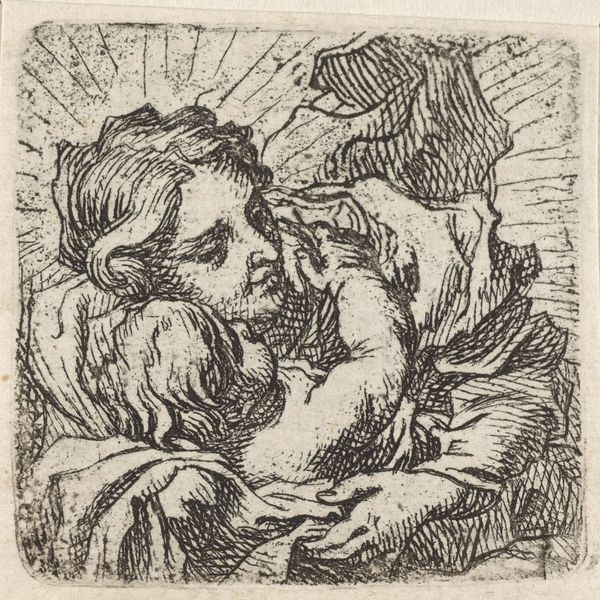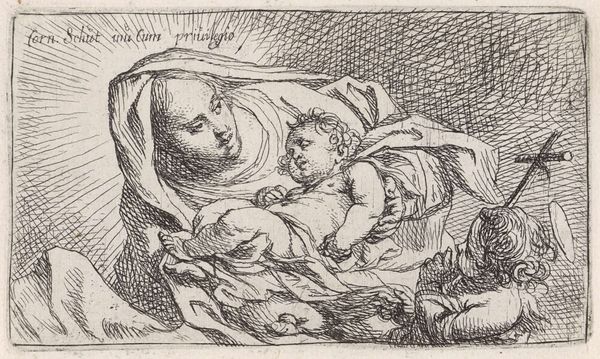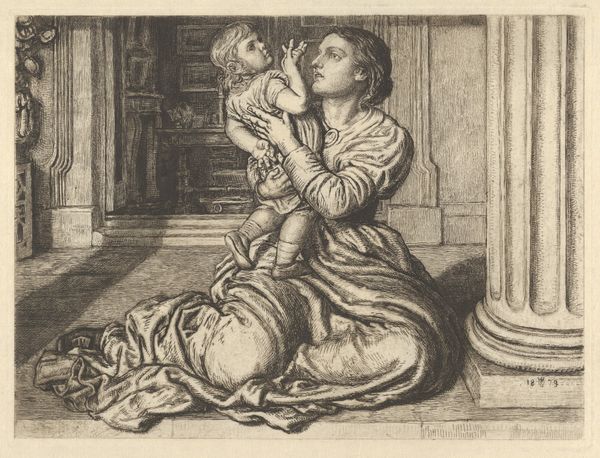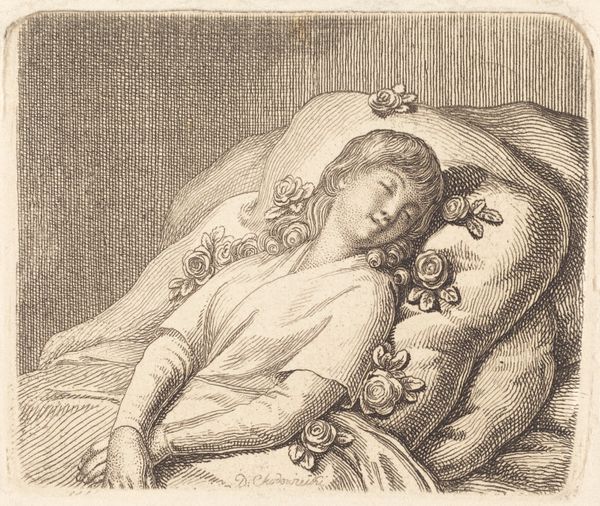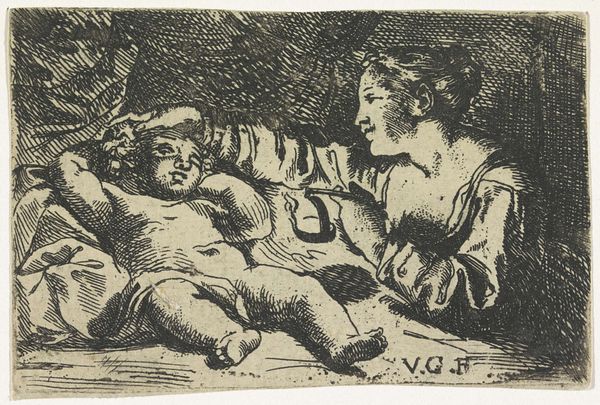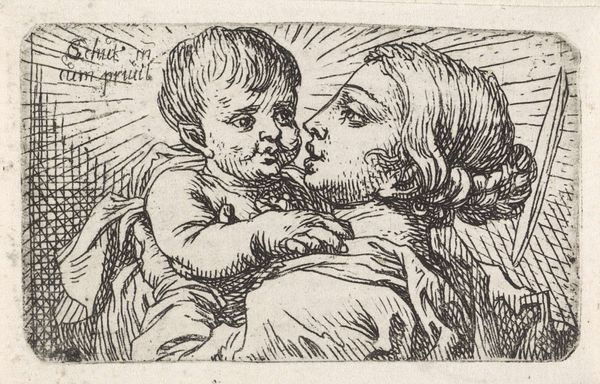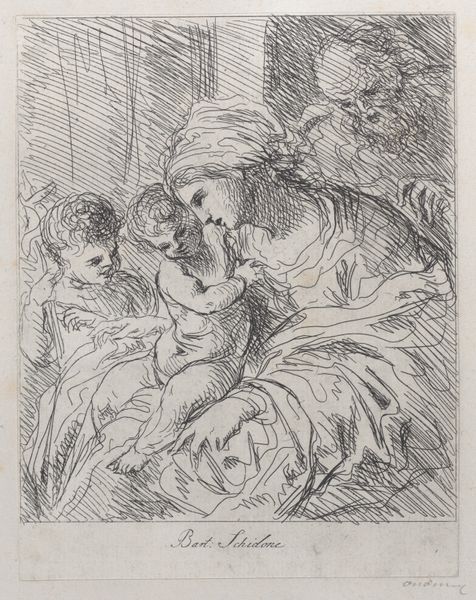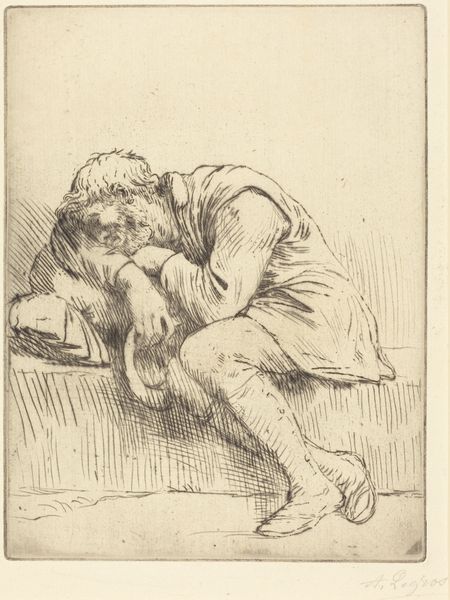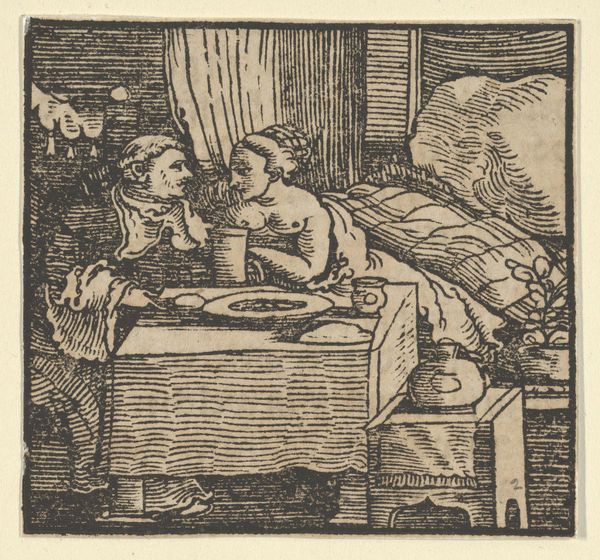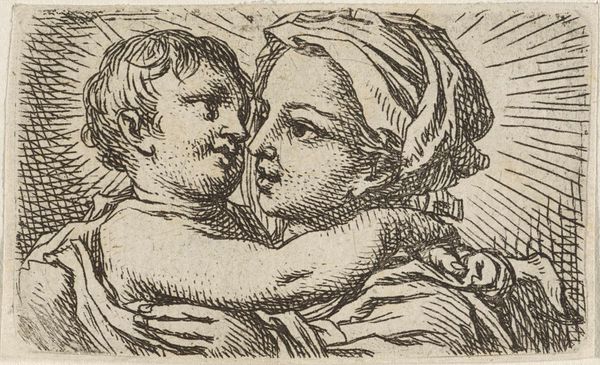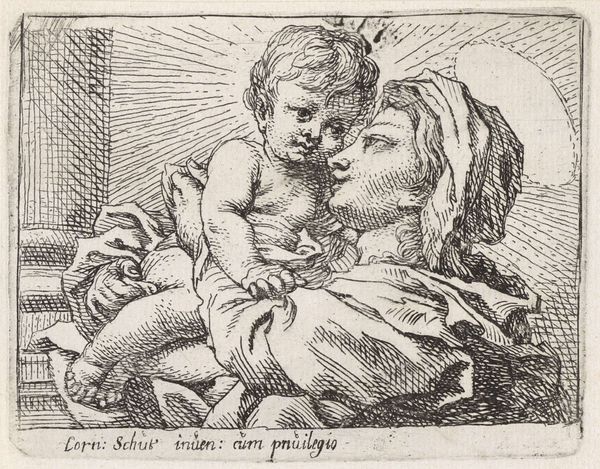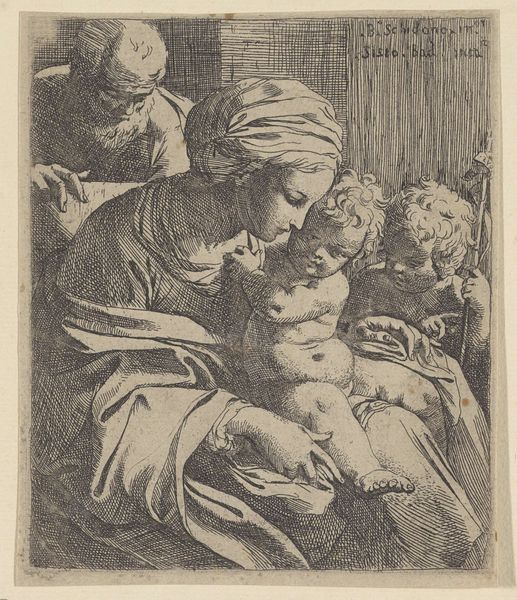
drawing, ink
#
portrait
#
drawing
#
baroque
#
figuration
#
ink
Dimensions: height 44 mm, width 49 mm
Copyright: Rijks Museum: Open Domain
Curator: This intimate work is entitled "Madonna met kind" – or Madonna and Child. It's an ink drawing created sometime between 1618 and 1655 by Cornelis Schut and is currently housed here at the Rijksmuseum. Editor: It strikes me as immediately vulnerable, perhaps even apprehensive. The raw lines of the ink feel emotionally charged, and the figures seem to huddle together, as though for mutual comfort. Curator: Well, I would say that the Madonna and Child as a subject carries immense historical weight. This particular piece invites consideration within a larger framework of maternal representation and religious power dynamics, especially during the Baroque period, which saw increased polarization of spiritual ideals. It's intriguing how Schut negotiates these through line and form. Editor: Right, there’s a kind of desperate clutching depicted. Look at how the child's arm reaches, almost grasping at something just out of frame. To me, this implies a future, a destiny that is both desired and perhaps dreaded. We often read the Madonna as simply maternal love, but Schut is hinting at a premonition of things to come, and an underlying powerlessness against fate. Curator: And within that fate is inherent tension, not only religiously but also socially. During Schut's time, depictions of women, particularly within religious contexts, served specific ideological functions. His choice of stark ink lines could reflect broader social pressures exerted on motherhood and female virtue. There's something in the materiality here suggesting a subtle form of critique or perhaps empathy. Editor: The lines really vibrate, giving that intense quality, but what about the Madonna’s gaze, downward, inward… it's complex! What are the recurring symbols surrounding Madonna and Child imagery that speak to that psychology across time? Are they present, altered, or deliberately absent here? The cultural memory embedded in this archetype... fascinating! Curator: A cultural memory that Schut, knowingly or unknowingly, both perpetuates and slightly destabilizes with the choice of medium and the stark portrayal. The interplay creates such fascinating layers! Editor: It does, I’m not sure about critique exactly but this tension is what gives it its lasting appeal for me. Curator: Absolutely. These subtleties keep us coming back, to reconsider our reading of familiar figures in a transformed perspective.
Comments
No comments
Be the first to comment and join the conversation on the ultimate creative platform.
